Variable Wall Permeability Effects on Flow and Heat Transfer in a Leaky Channel Containing Water-Based Nanoparticles
Abstract
:1. Introduction
2. Problem Statement
3. Solution of the Problem
3.1. Zeroth-Order Problem and Solution
3.2. First-Order Problem and Solution
4. Results and Discussion
5. Concluding Remarks
- Velocity components, temperature, wall shear stress, and heat transfer rate are higher at the entrance compared to middle and exit regions of the channel due to fluid leakage across the walls.
- Increasing the strength of nanoparticles volume fraction causes enhanced velocity components, temperature, wall shear stress, and rate of heat transfer at all positions inside the channel.
- Titanium dioxide nanofluid has higher values for velocity component and wall shear stress compared to copper and alumina, while opposite behavior is noticed for temperature.
- Reabsorption parameter reduces the longitudinal velocity, while increasing the transverse velocity at all regions inside the the channel.
- Higher values of reabsorption parameter and Brinkman number enhance dimensionless temperature at the entrance, middle, and exit regions.
- Maximum longitudinal velocity is observed in the center line, while maximum transverse velocity is noticed at the surface of the wall.
- Streamlines indicate high fluid reabsorption with increasing reabsorption parameter.
Author Contributions
Funding
Conflicts of Interest
References
- Sheikholeslami, M.; Hatami, M.; Ganji, D.D. Analytical investigation of MHD nanofluid flow in a semi-porous channel. Powder Technol. 2013, 246, 327–336. [Google Scholar] [CrossRef]
- Andoh, Y.H.; Lips, B. Prediction of porous walls thermal protection by effusion or transpiration cooling. An analytical approach. Appl. Therm. Eng. 2003, 23, 1947–1958. [Google Scholar] [CrossRef]
- Runstedtler, A. On themodi fied Stefan-Maxwell equation for isothermal multi component gaseous diffusion. Chem. Eng. Sci. 2006, 61, 5021–5029. [Google Scholar] [CrossRef]
- Berman Abraham, S. Laminar flow in channels with porous walls. J. Appl. Phys. 1953, 24, 1232–1235. [Google Scholar] [CrossRef]
- Sellars John, R. Laminar flow in channels with porous walls at high suction Reynolds numbers. J. Appl. Phys. 1955, 26, 489–490. [Google Scholar] [CrossRef] [Green Version]
- Yuan, S.W. Further investigation of laminar flow in channels with porous walls. J. Appl. Phys. 1956, 27, 267–269. [Google Scholar] [CrossRef]
- Terrill, R.M. Laminar flow in a uniformly porous channel with large injection. Aeronaut. Q. 1965, 16, 323–332. [Google Scholar] [CrossRef]
- Kozinski, A.A.; Schmidt, F.P.; Lightfoot, E.N. Velocity profiles in porous-walled ducts. Ind. Eng. Chem. Fundam. 1970, 9, 502–505. [Google Scholar] [CrossRef]
- Muthu, P.; Berhane, T. Mathematical model of flow in renal tubules. Int. J. Appl. Math. Mech. 2010, 6, 94–107. [Google Scholar]
- Muthu, P.; Berhane, T. Flow through nonuniform channel with permeable wall and slip effect. Spec. Top. Rev. Porous Media Int. J. 2012. [Google Scholar] [CrossRef]
- Muthu, P.; Berhane, T. Fluid flow in asymmetric channel. Tamkang J. Math. 2010, 42, 149–162. [Google Scholar] [CrossRef] [Green Version]
- Berhane, T. Flow of a Newtonian fluid in a non-uniform wavy and permeable tube. New Trends Math. Sci. 2017, 4, 12–23. [Google Scholar] [CrossRef]
- Chol, S.U.S.; Estman, J.A. Enhancing thermal conductivity of fluids with nanoparticles. ASME-Publ.-Fed 1995, 231, 99–106. [Google Scholar]
- Choi, S.U.; Zhang, Z.G.; Yu, W.; Lockwood, F.E.; Grulke, E.A. Anomalous thermal conductivity enhancement in nanotube suspensions. Appl. Phys. Lett. 2001, 79, 2252–2254. [Google Scholar] [CrossRef]
- Buongiorno, J. Convective transport in nanofluids. J. Heat Transf. 2006, 128, 240–250. [Google Scholar] [CrossRef]
- Li, Q.; Xuan, Y. Convective heat transfer and flow characteristics of Cu-water nanofluid. Sci. China Ser. E Technolgical Sci. 2002, 45, 408–416. [Google Scholar]
- Kang, S.-W.; Wei, W.-C.; Tsai, S.-H.; Yang, S.-Y. Experimental investigation of silver nano-fluid on heat pipe thermal performance. Appl. Thermal Eng. 2006, 26, 2377–2382. [Google Scholar] [CrossRef]
- Fotukian, S.M.; Esfahany, M.N. Experimental study of turbulent convective heat transfer and pressure drop of dilute CuO/water nanofluid inside a circular tube. Int. Commun. Heat Mass Transf. 2010, 37, 214–219. [Google Scholar] [CrossRef]
- Kandelousi, M.S. KKL correlation for simulation of nanofluid flow and heat transfer in a permeable channel. Phys. Lett. A 2014, 378, 3331–3339. [Google Scholar] [CrossRef]
- Sheikholeslami, M.; Rashidi, M.M.; Ganji, D.D. Effect of non-uniform magnetic field on forced convection heat transfer of Fe3O4–water nanofluid. Comput. Methods Appl. Mech. Eng. 2015, 294, 299–312. [Google Scholar] [CrossRef]
- Sheikholeslami, M.; Gorji-Bandpy, M.; Ganji, D.D. Lattice Boltzmann method for MHD natural convection heat transfer using nanofluid. Powder Technol. 2014, 254, 82–93. [Google Scholar] [CrossRef]
- Dreaden, E.C.; Alkilany, A.M.; Huang, X.; Murphy, C.J.; El-Sayed, M.A. The golden age: Gold nanoparticles for biomedicine. Chem. Soc. Rev. 2012, 41, 2740–2779. [Google Scholar] [CrossRef] [PubMed] [Green Version]
- Lee, J.E.; Lee, N.; Kim, T.; Kim, J.; Hyeon, T. Multifunctional mesoporous silica nanocomposite nanoparticles for theranostic applications. Acc. Chem. Res. 2011, 44, 893–902. [Google Scholar] [CrossRef] [PubMed]
- Barrak, H.; Saied, T.; Chevallier, P.; Laroche, G.; M’nif, A.; Hamzaoui, A.H. Synthesis, characterization, and functionalization of ZnO nanoparticles by N-(trimethoxysilylpropyl) ethylenediamine triacetic acid (TMSEDTA): Investigation of the interactions between Phloroglucinol and ZnO@ TMSEDTA. Arab. J. Chem. 2019, 12, 4340–4347. [Google Scholar] [CrossRef] [Green Version]
- Ganesh, M.; Hemalatha, P.; Peng, M.M.; Jang, H.T. One pot synthesized Li, Zr doped porous silica nanoparticle for low temperature CO2 adsorption. Arab. J. Chem. 2017, 10, S1501–S1505. [Google Scholar] [CrossRef] [Green Version]
- Mansha, M.; Khan, I.; Ullah, N.; Qurashi, A. Synthesis, characterization and visible-light-driven photoelectrochemical hydrogen evolution reaction of carbazole-containing conjugated polymers. Int. J. Hydrog. Energy 2017, 42, 10952–10961. [Google Scholar] [CrossRef]
- Bush, A.W. Perturbation Methods for Engineers and Scientists; Routledge: Abingdon, UK, 2018. [Google Scholar]
- Van Dyke, M. Perturbation Methods in Fluid Mechanics; Academic Press: New York, NY, USA, 1964; Volume 136. [Google Scholar]
- Fakour, M.; Vahabzadeh, A.; Ganji, D.D. Study of heat transfer and flow of nanofluid in permeable channel in the presence of magnetic field. Propuls. Power Res. 2015, 4, 50–62. [Google Scholar] [CrossRef] [Green Version]
- Khan, I.; Alqahtani, A.M. MHD nanofluids in a permeable channel with porosity. Symmetry 2019, 11, 378. [Google Scholar] [CrossRef] [Green Version]


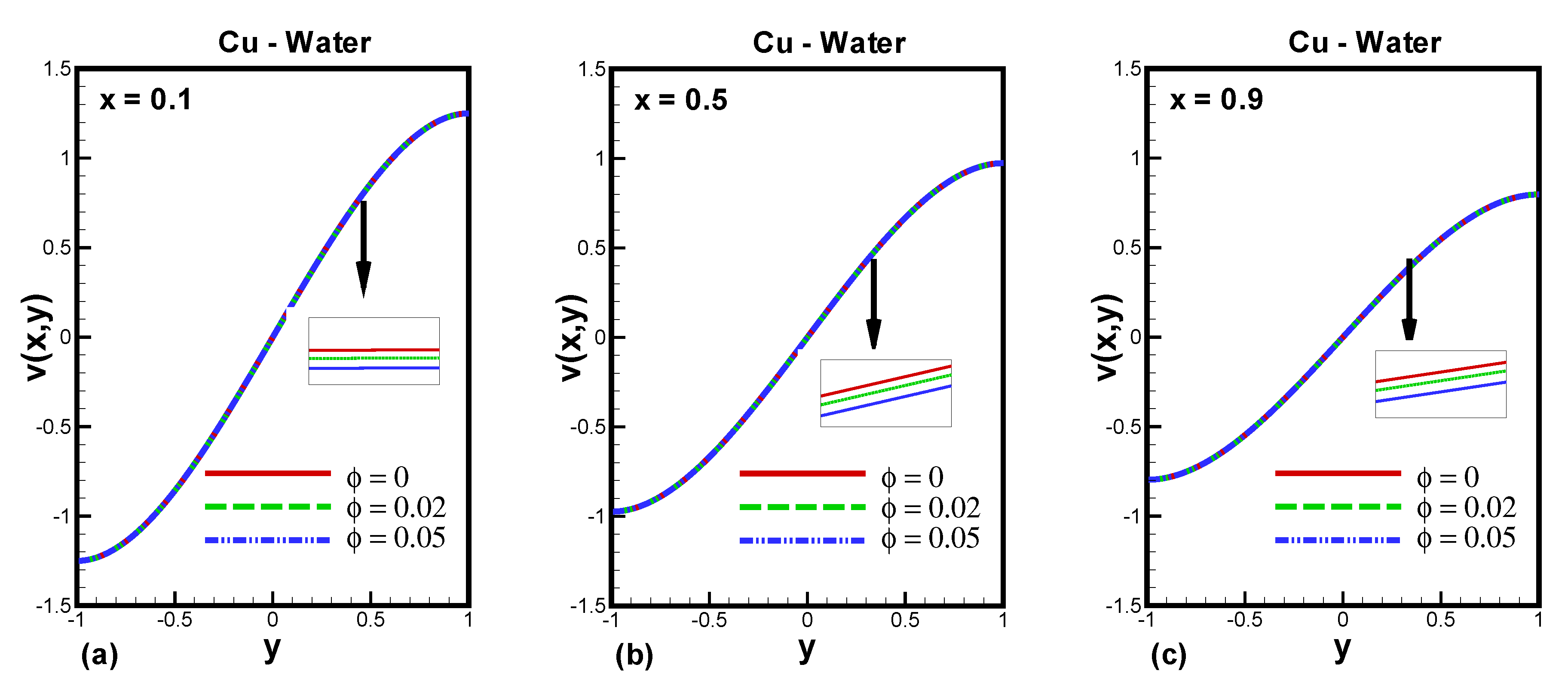
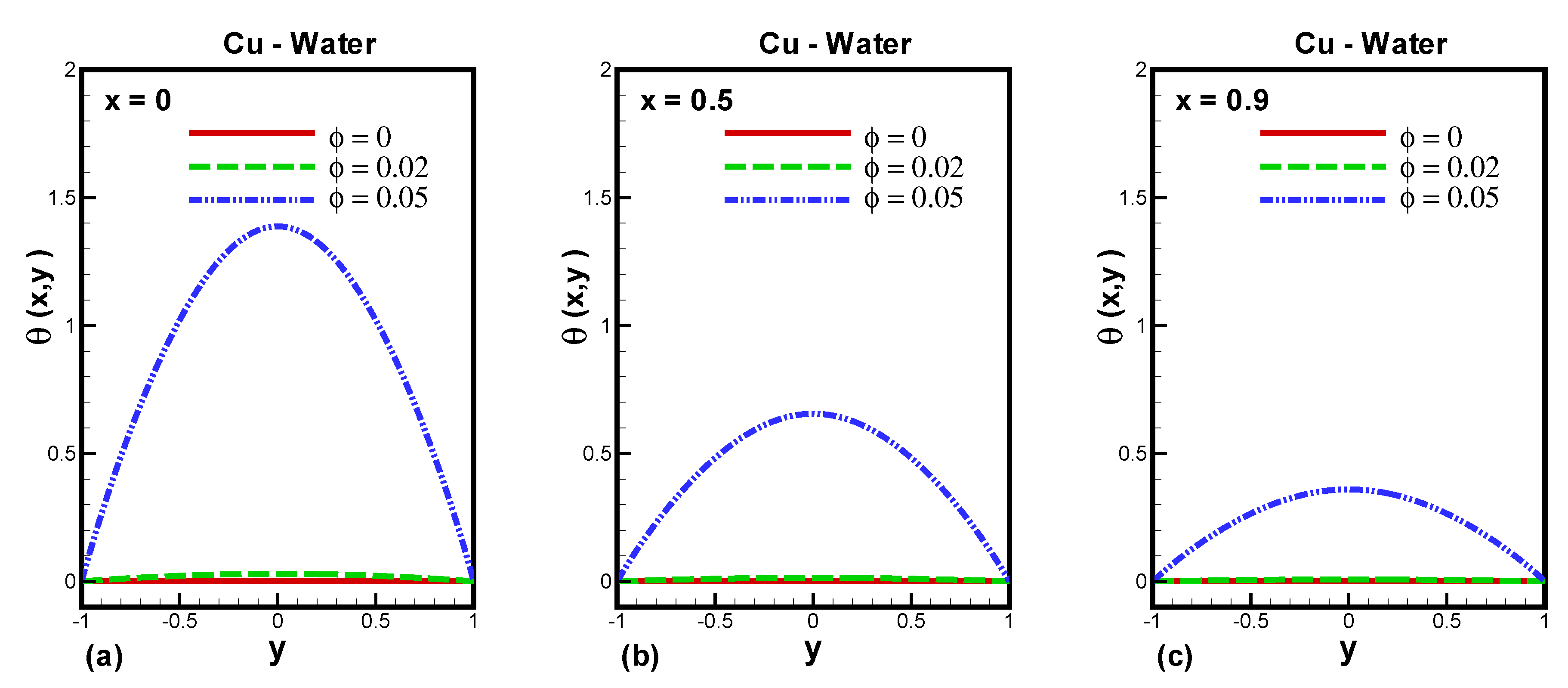
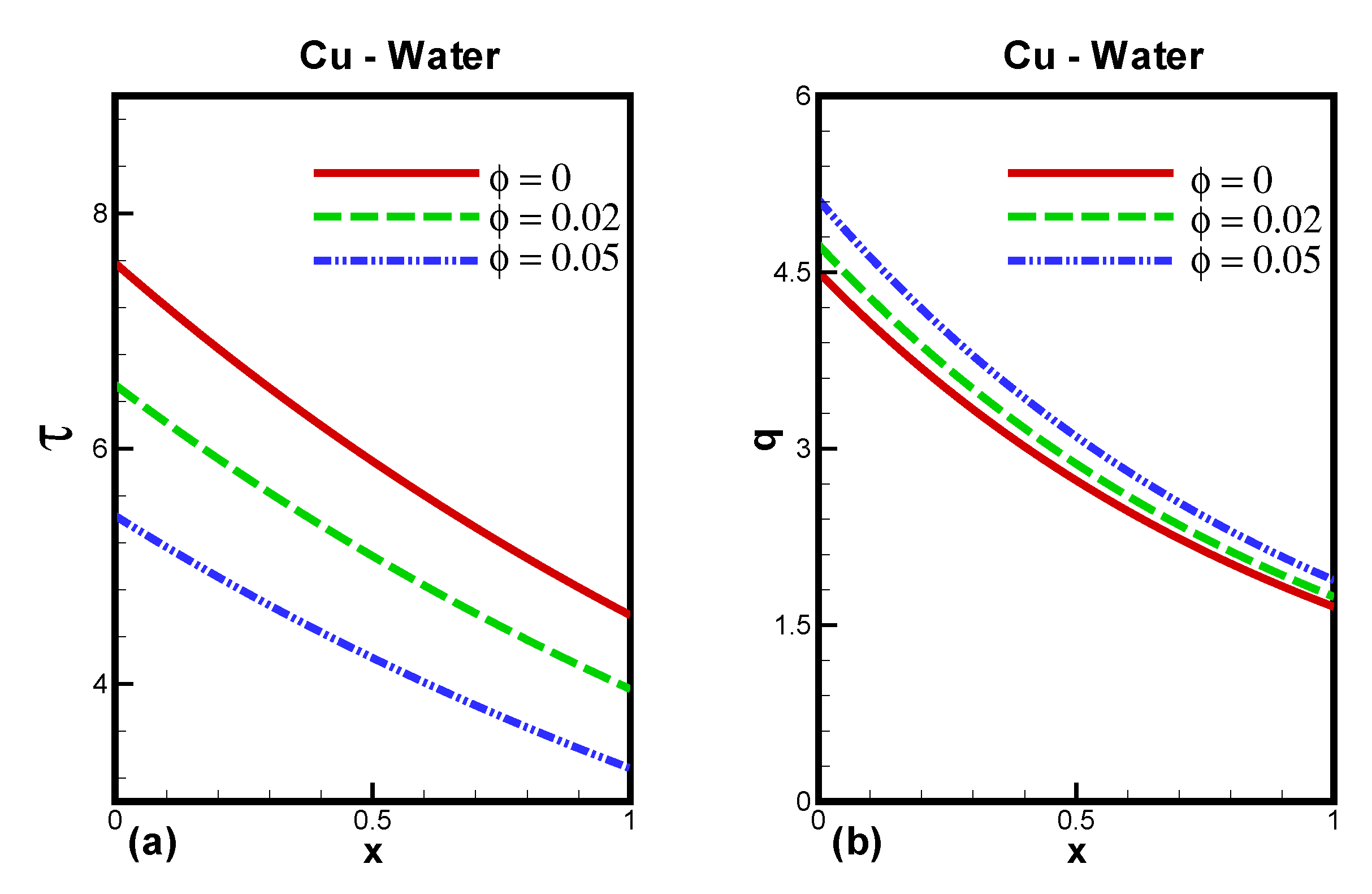
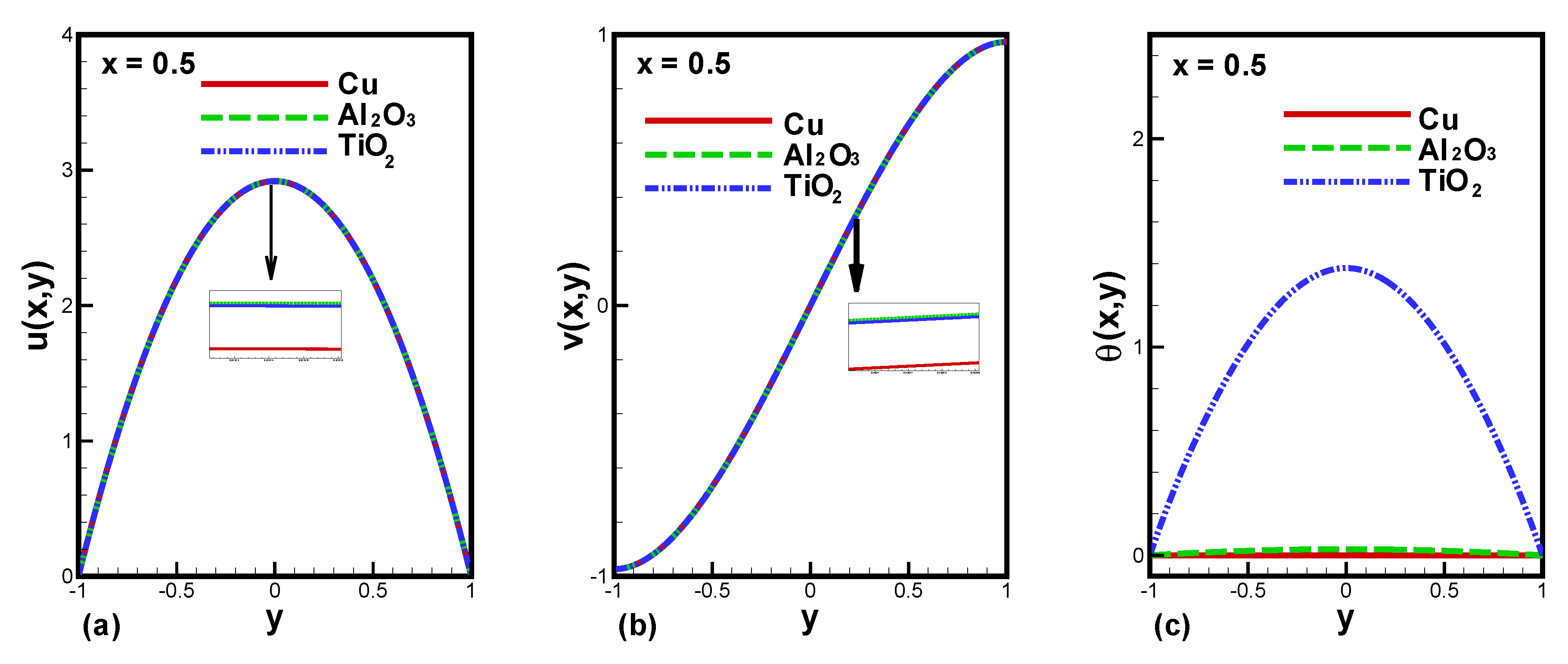
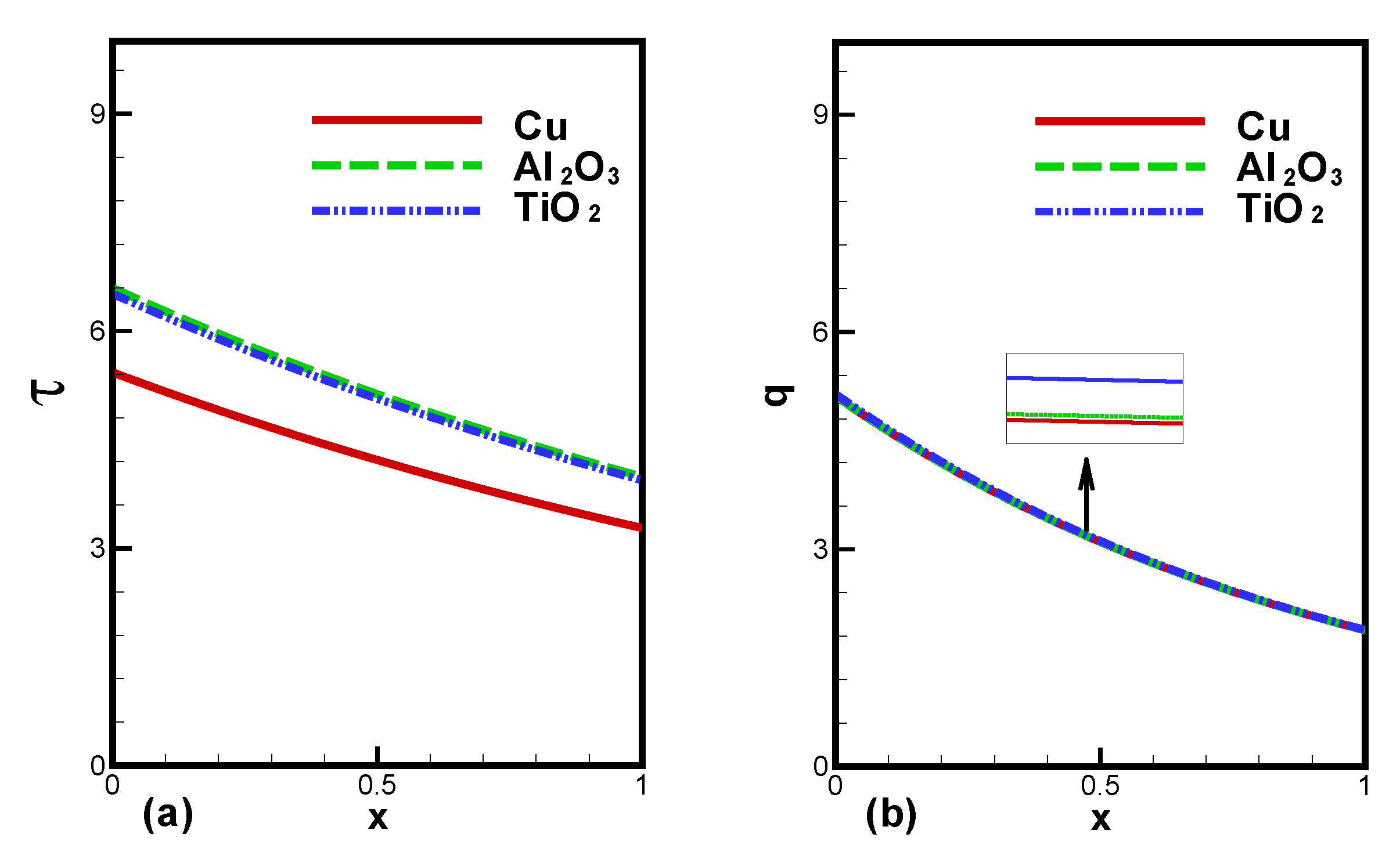

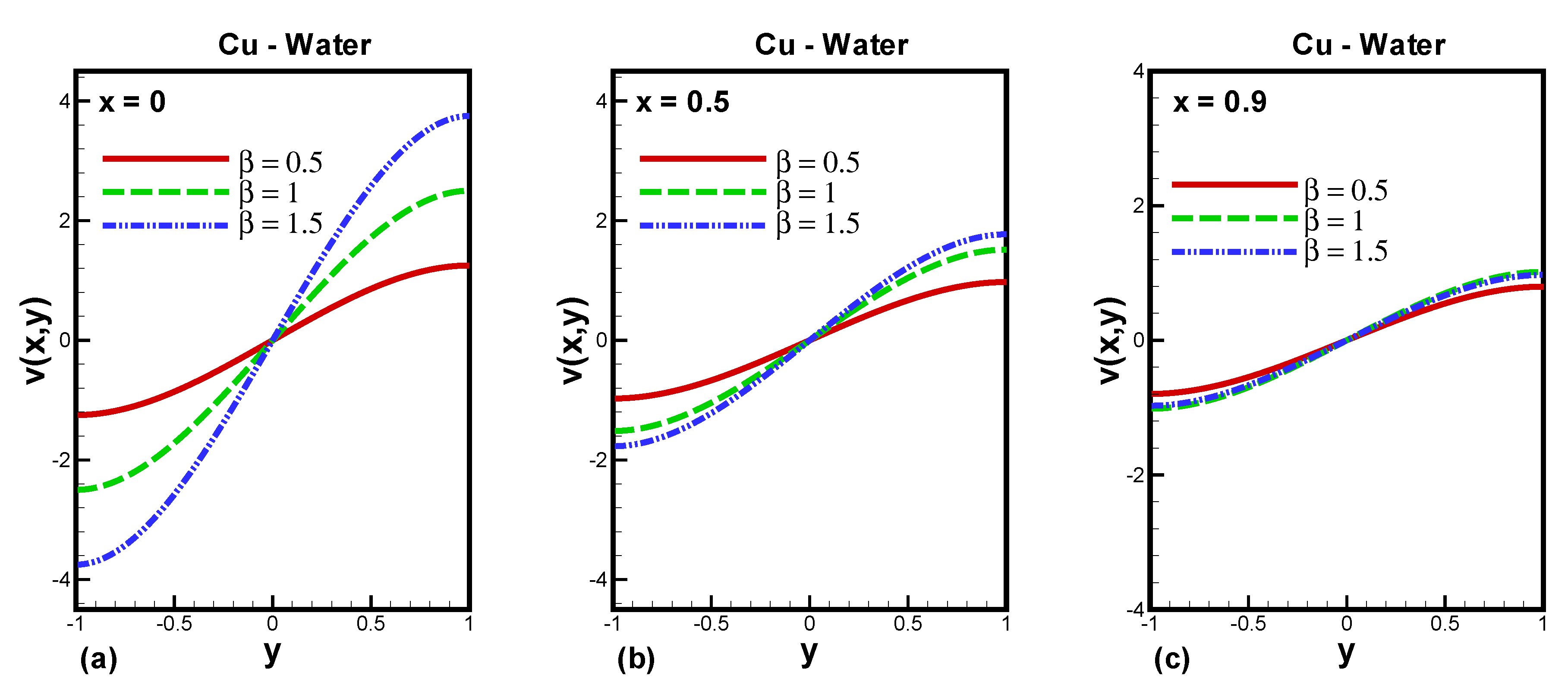
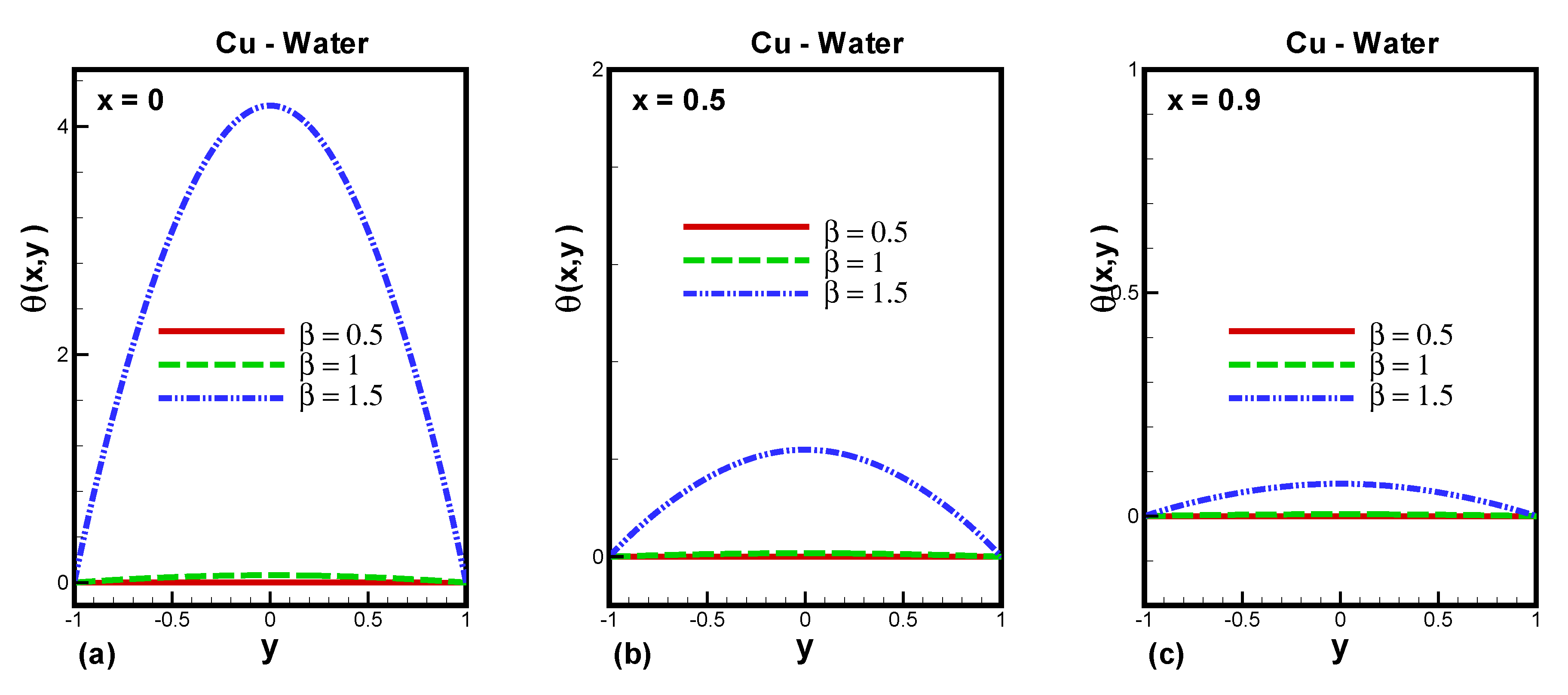
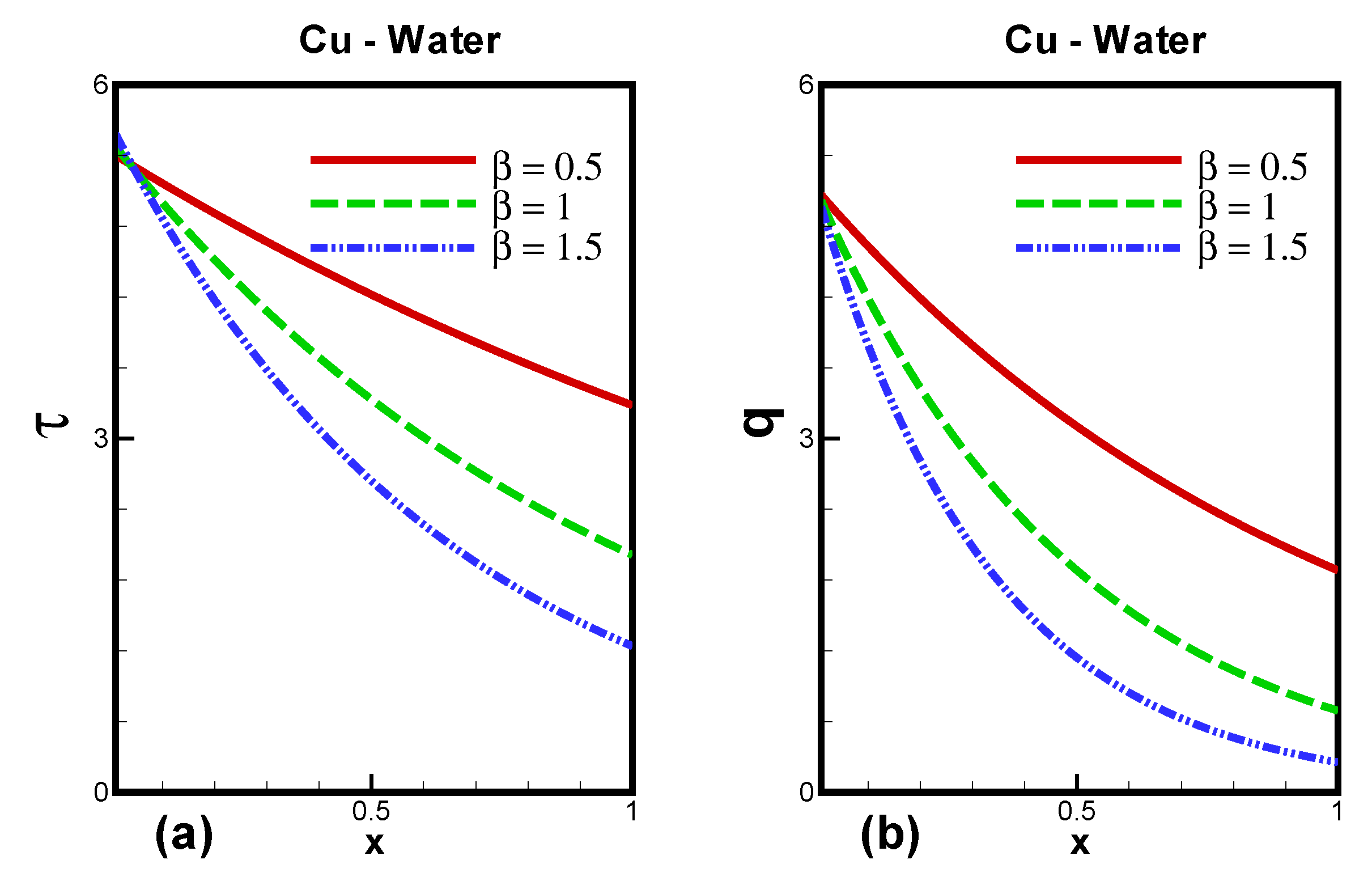
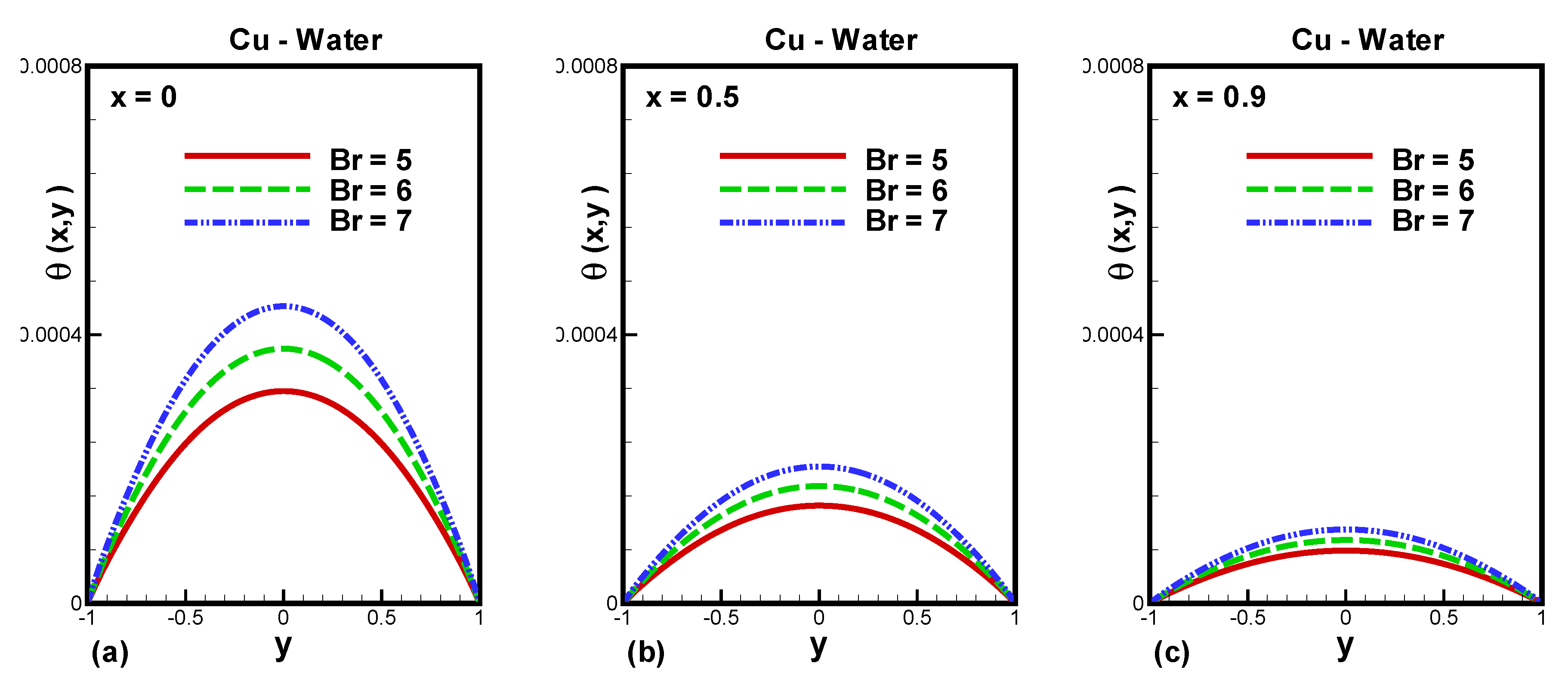
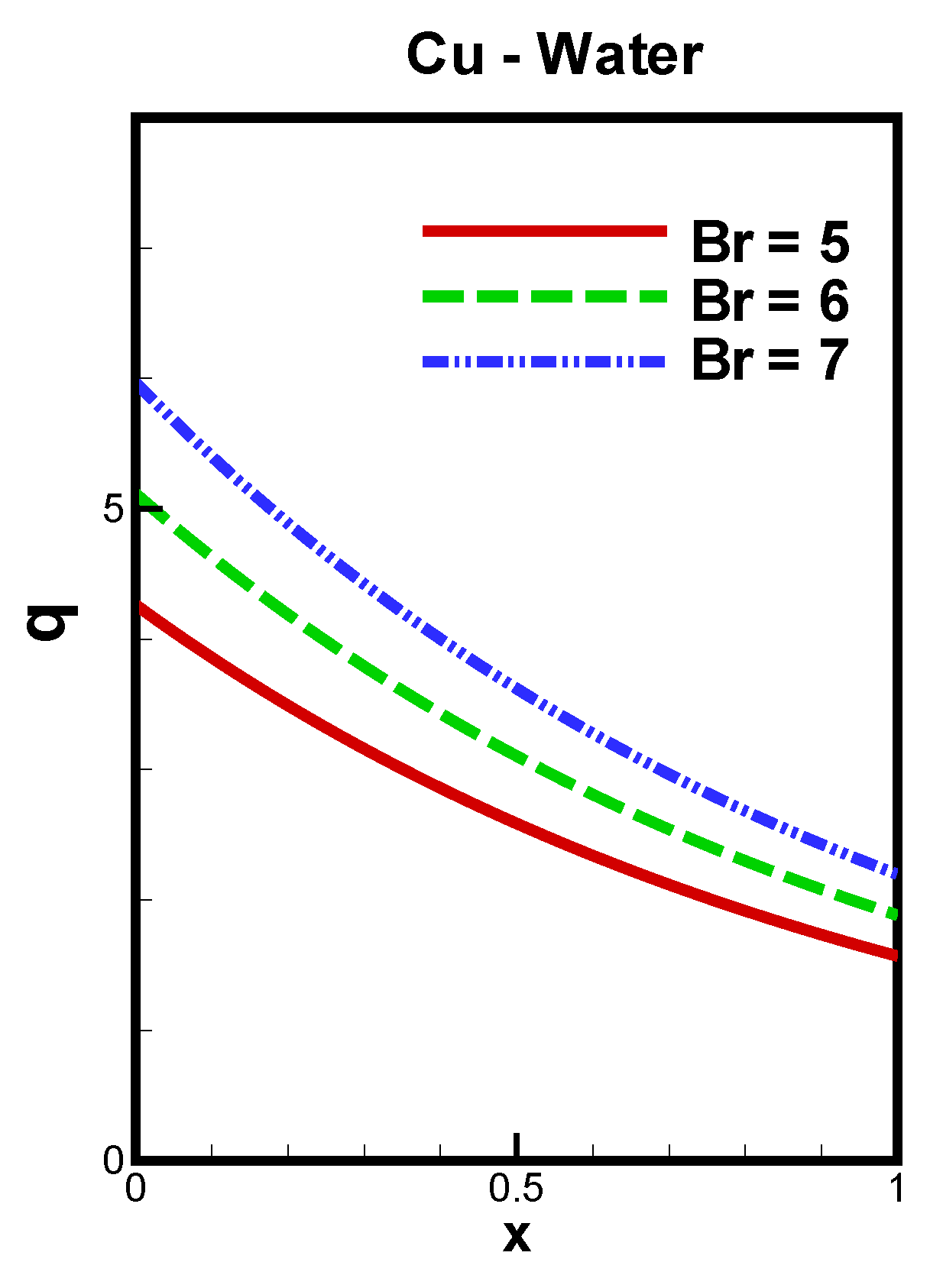
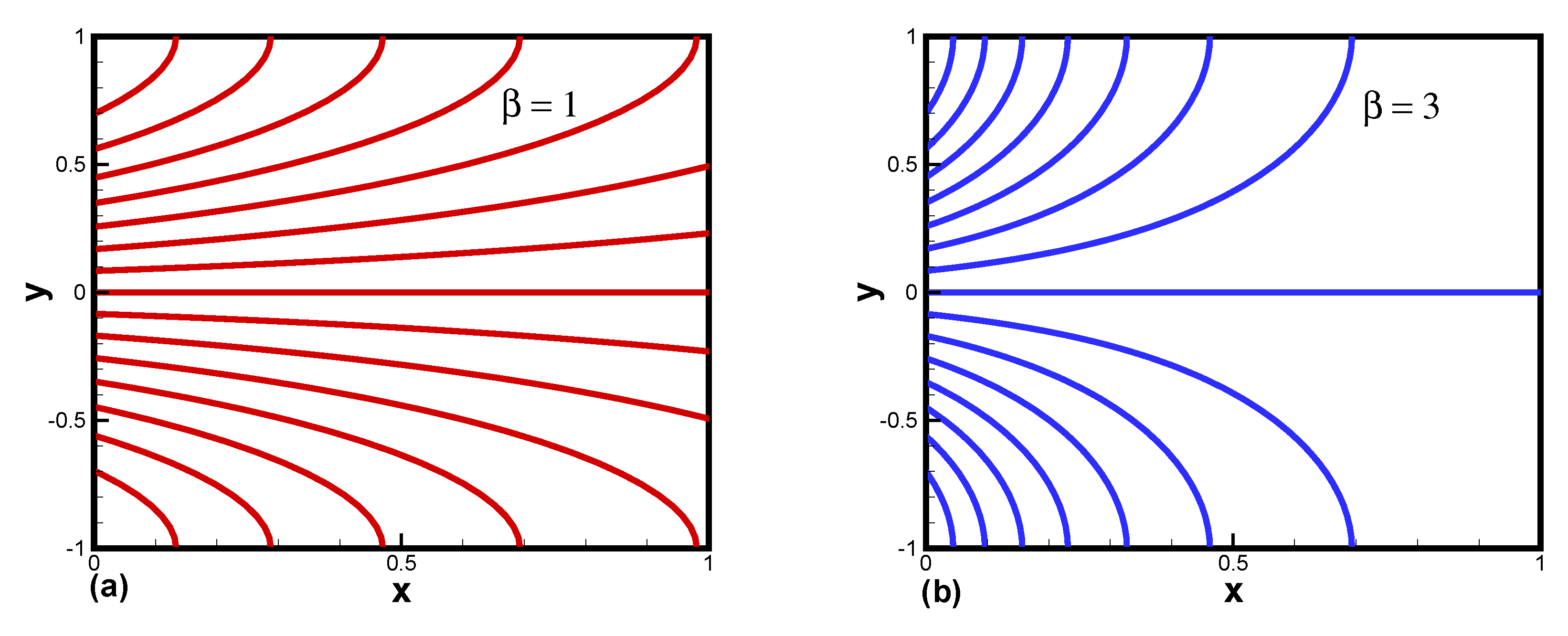
© 2020 by the authors. Licensee MDPI, Basel, Switzerland. This article is an open access article distributed under the terms and conditions of the Creative Commons Attribution (CC BY) license (http://creativecommons.org/licenses/by/4.0/).
Share and Cite
Shahzad, A.; Al-Kouz, W.; Khan, W.A. Variable Wall Permeability Effects on Flow and Heat Transfer in a Leaky Channel Containing Water-Based Nanoparticles. Processes 2020, 8, 427. https://doi.org/10.3390/pr8040427
Shahzad A, Al-Kouz W, Khan WA. Variable Wall Permeability Effects on Flow and Heat Transfer in a Leaky Channel Containing Water-Based Nanoparticles. Processes. 2020; 8(4):427. https://doi.org/10.3390/pr8040427
Chicago/Turabian StyleShahzad, Aamir, Wael Al-Kouz, and Waqar A. Khan. 2020. "Variable Wall Permeability Effects on Flow and Heat Transfer in a Leaky Channel Containing Water-Based Nanoparticles" Processes 8, no. 4: 427. https://doi.org/10.3390/pr8040427




